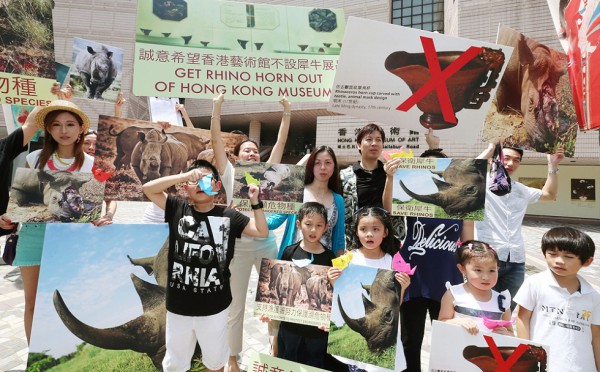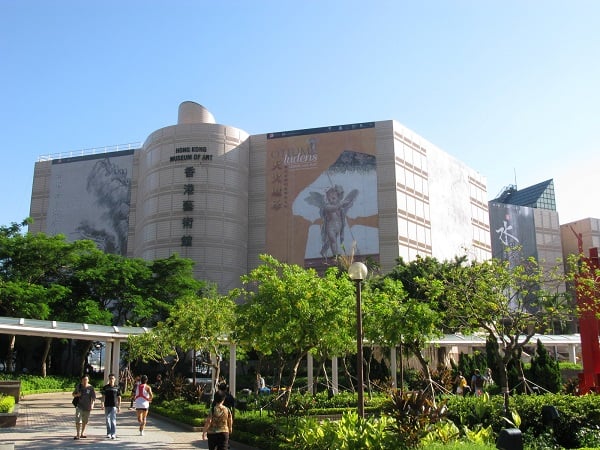Art & Exhibitions
Hong Kong Museum of Art Slammed for Ivory Exhibition
The “white gold” is said to be funding terrorism.

The “white gold” is said to be funding terrorism.

Protestors flocked to the Hong Kong Museum of Art over the weekend to protest a current exhibition featuring works made from ivory and rhino horn, the South China Morning Post (SCMP) reports. Sourced from the private collection of Hong Kong-based collector C.P. Lin, the exhibition features 270 pieces from the Ming and Qing dynasties, which were made for the emperor and his court.
“The museum is staging a marketing campaign for this illegal business without even realizing it,” Hong Kong Humane Education Coalition coordinator Rosana Ng Mei-fung told the SCMP at the protest.
Mei-fung previously noted what she characterized as conflicting signals given by the government: “The Agriculture, Fisheries and Conservation Department is burning ivory and promoting the message of protecting endangered species while the Leisure and Cultural Services Department (LCSD) is showing rhino horns as art.”
Current market demand puts a kilogram of illegal rhino horn sold on the Chinese black market at about $38,000 and a kilogram of illegal ivory at $2,100. Activists argue that the glamorization of ivory and rhino horn artifacts, despite these particular works’ origins in the late 14th to early 20th centuries, would continue to push up demand and, in turn, prices.
Displaying Antiquities to Educate the Public About the Treasures of Our Past

The Hong Kong Museum of Art.
Photo: Baycrest via Wikipedia
However, a LCSD spokeswoman characterized their efforts as quite the opposite. Ahead of the protests, she told the SCMP: “The Museum and the collector Mr C. P. Lin unreservedly support safeguarding the dwindling populations of African elephants and rhinoceroses in the wild and combating illegal poaching and trading,” going on to explain that, “The Hong Kong Museum of Art displays these antiquities to celebrate and educate the public about the treasures of our past.”
In a separate report also published on Sunday, the paper renews claims that China’s ever-growing demand for ivory is funding violence and terrorism in the Middle East and Africa. According to a United Nations Environment Programme study cited by the publication , Joseph Kony’s Lord’s Resistance Army makes an estimated $4-12 million per year trafficking ivory. Al-Qaeda’s Somalia-based cell al-Shabab, also reportedly benefits tremendously from the ivory trade, acting as a middleman between the poachers and black market dealers in local markets.
“In Africa, al-Shabab is considered a good buyer – it pays well, pays on time and there are no jokes. Usually they arrange pick-ups in the middle of nowhere and move the ivory quickly offshore in skiffs, like with drugs,” Elephant Action League executive director Andrea Crosta told the paper. He estimates they have the capacity to turn over between one and three metric tons of the illegal good per month.
Of the targeted markets, China is by far the largest. Estimates place the country’s ivory consumption at around 60-90 percent of the total volume leaving the African continent. Last year alone, 8,041 kilograms (17,727 pounds) of ivory was confiscated in Hong Kong, an all time high. Experts suggest that continual economic growth in the country is pushing up that demand. For example, those confiscations marked a 43 percent increase over 2012 and 300 percent increase over 2003, according to figures from the Hong Kong Agriculture, Fisheries, and Conservation Department cited by the SCMP.